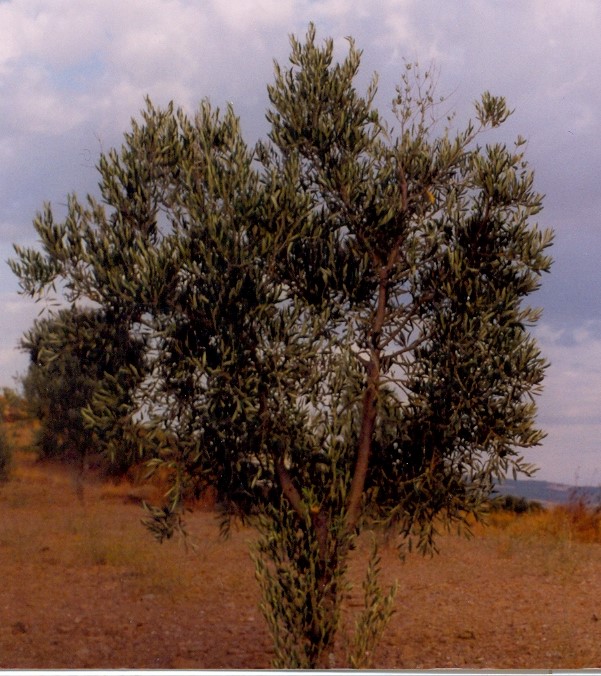A importância do boro em olival é do nível de um macronutriente - Bibliografia
M. Ângelo Rodrigues, Margarida Arrobas
Centro de Investigação de Montanha (CIMO), Instituto Politécnico de Bragança

O boro é um elemento essencial às plantas. A essencialidade do boro está demonstrada desde a primeira metade do século XX. Pensa-se que terá tido um papel importante na evolução das plantas vasculares, devido às suas funções ligadas às paredes das células. Contudo, o boro está incluído no grupo dos micronutrientes, por ser necessário às plantas em quantidades relativamente reduzidas. O boro encontra-se no solo numa elevada diversidade de minerais primários, associado à fração orgânica, adsorvido a partículas minerais e orgânicas e na solução do solo. Contudo, a deficiência de boro encontra-se mais dispersa no mundo do que a de qualquer outro micronutriente. Apesar de estar classificado como micronutriente, a frequência com que a sua aplicação tem de ser considerada na fertilização das culturas confere-lhe um estatuto equivalente ao dos macronutrientes principais, sobretudo na fruticultura de sequeiro do interior de Portugal com será explicado neste documento.
BIBLIOGRAFIA
Arrobas, M., Lopes, J.I., Pavão, F., Cabanas, J.E., Rodrigues, M.A. 2010. Comparative boron nutritional diagnosis for olive based on July and January leaf samplings. Commun Soil Sci Plant Anal 41:709–720.
Arrobas, M., Moutinho-Pereira, J. 2009. Fertilização do olival. In: Rodrigues, M. A., Correia, C. M. (Eds.). Manual da safra e contra safra do Olival. pp. 21-39.
Blevins, D.G., Lukaszewski, K.M. 1998. Boron in plant structure and function. Annu Rev Plant Physiol Plant Mol Biol 49:481–500.
Broadley, M., Brown, P., Cakmak, I., Rengel, Z., Zhao, F. 2012. Function of nutrients, micronutrients. In: Marschner, P. (Ed.), Marschner’s Mineral Nutrition of Higher Plants. Elsevier, London, UK. pp. 191–248.
Brown, P.H., Shelp, B.J. 1997. Boron mobility in plants. Plant Soil 193: 85–101.
Bryson, G., Mills, H.A., Sasseville, D.N., Jones Jr., J.B., Barker, A.V. 2014. Plant Analysis Handbook III. A Guide to Sampling, Preparation, Analysis and Interpretation for Agronomic and Horticultural Crops. Micro-Macro Publishing, Inc., Athens, GA.
Delgado, A., Benlloch, M., Fernández-Escobar, R. 1994. Mobilization of boron in olive trees during flowering and fruit development. HortScience 29(6): 616–618.
Fernández-Escobar, R., 2017. Fertilization. In: Barranco, D., Fernández-Escobar, R., Rallo, L. (Eds.). El Cultivo del Olivo., 7th ed. Mundi-Prensa., Madrid, Spain. pp. 419–460.
Ferreira, I.Q., Rodrigues, M.A., Arrobas, M. 2019. Soil and foliar applied boron in olive: tree crop growth and yield, and boron remobilization within plant tissue. Span J Agric Res 17 (1), e0901.
Freeman, M., Carlson, R.M. 2005. Mineral nutrient availability. In: Sibbett, G.S., Ferguson, L. (Eds.) Olive Production Manual, 3353, 2nd ed. University of California Publication, Oakland, Califórnia. pp. 75–82.
Freeman, M., Uriu, K., Hartmann, H.T. 2005. Diagnosing and correcting nutrient problems. In: Sibbett, G. S., Ferguson, L. (Eds.) Olive Production Manual, 3353, 2nd ed. University of California Publication, Oakland, Califórnia. pp. 83-98.
Goldberg, S. 1997. Reactions of boron with soils. Plant Soil 193: 35-48.
Goldberg, S., Suarez, D.L. 2012. Role of organic matter on boron adsorption-desorption hysteresis of soils. Soil Sci 177: 417-423.
Gregoriou, C., El-Kholy, M. 2010. Fertilization, in: Olive GAP Manual: Good Agricultural Practices for the Near East & North Africa Countries. FAO, Rome, Italy.
Gupta, U.C. 2007. Boron. In: Barker, A.V., Pilbeam, D.J. (Eds.) Handbook of plant nutrition. CRC. pp. 241-277.
Havlin, J.L., Tisdale, S.L., Nelson, W.L., Beaton, J.D. 2014. Soil fertility and fertilizers, an introduction to nutrient management, 8th edition. Pearson, Inc, New Jersey, USA.
Howe, P.D. 1998. A review of boron effects in the environment. Biol Trace Elem Res 66:153-166.
Hu, H., Brown, P.H. 1997. Absorption of boron by plant roots. Plant Soil 193: 49-58.
Liakopoulos, G., Karabourniotis, G. 2005. Boron deficiency and concentrations and composition of phenolic compounds in Olea europaea leaves: A combined growth chamber and field study. Tree Physiol 25 (3): 307–315.
LQARS (Laboratório Químico Agrícola Rebelo da Silva). 2006. Manual de fertilização das culturas. Ministério da Agricultura, do Desenvolvimento Rural e Pescas. Instituto Nacional de Investigação Agrária e das Pescas, Lisboa, Portugal.
Nable, R.O., Bañuelos, G.S., Paul, J.G. 1997. Boron toxicity. Plant Soil 198: 181–198.
Reid, R. 2014. Understanding the boron transport network in plants. Plant Soil 385: 1–13.
Rodrigues, M.A., Ferreira, I.Q., Claro, A.M., Arrobas, M. 2012. Fertilizer recommendations for olive based upon nutrients removed in crop and pruning. Sci Hortic 142: 205–211.
Rodrigues, M.A., Pavão, F., Lopes, J.I., Gomes, V., Arrobas, M., Moutinho-Pereira, J., Ruivo, S., Cabanas, J.E., Correia, C.M. 2011. Olive yields and tree nutritional status during a four-year period without nitrogen and boron fertilization. Commun Soil Sci Plant Anal 42 (7):803-814.
Shorrocks, V.M. 1997. The occurrence and correction of boron deficiency. Plant Soil193:121-148.
Wimmer, M.A., Eichert, T. 2013. Review: Mechanisms for boron deficiency-mediated changes in plant water relations. Plant Sci 203/204:25– 32.